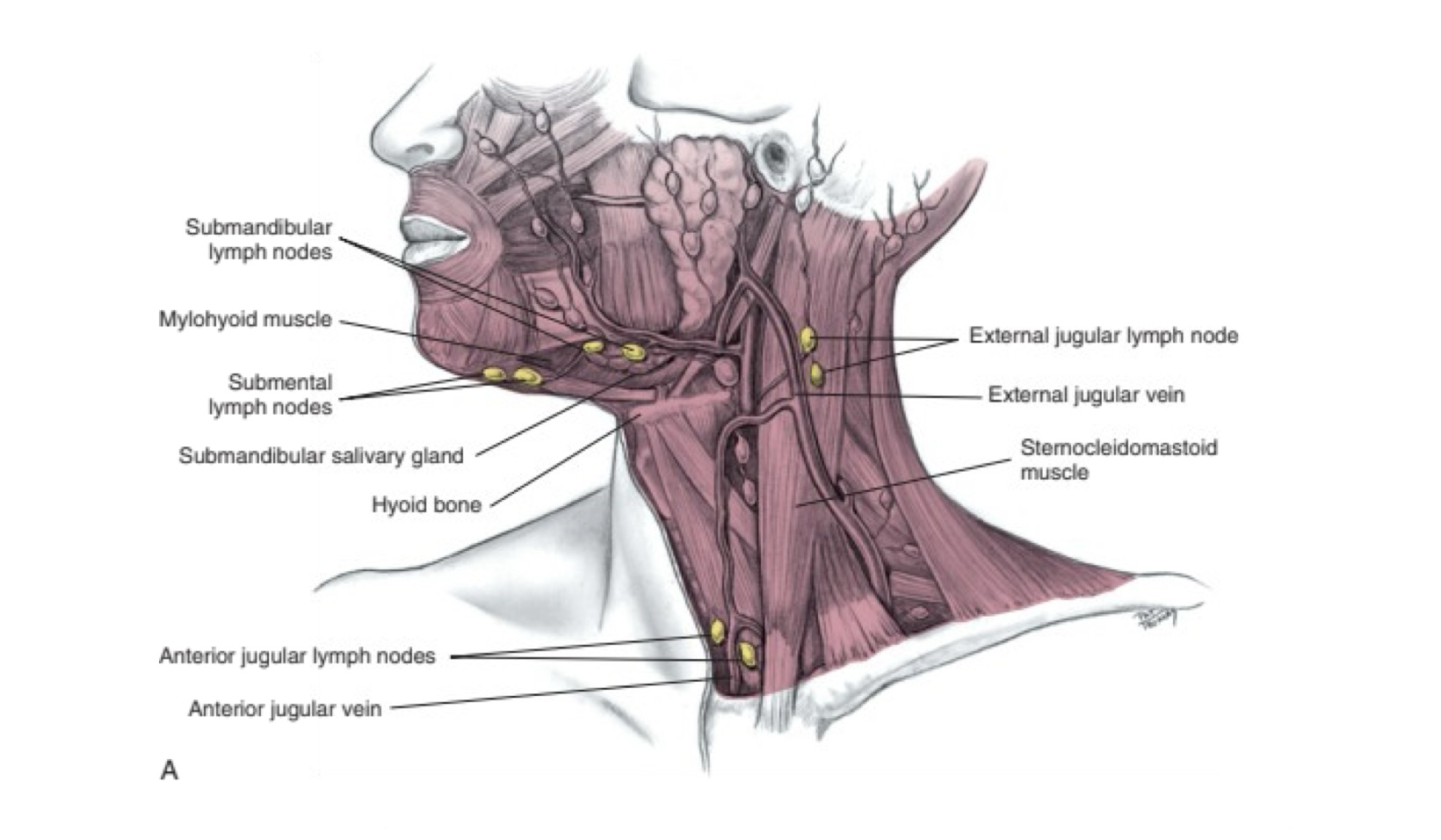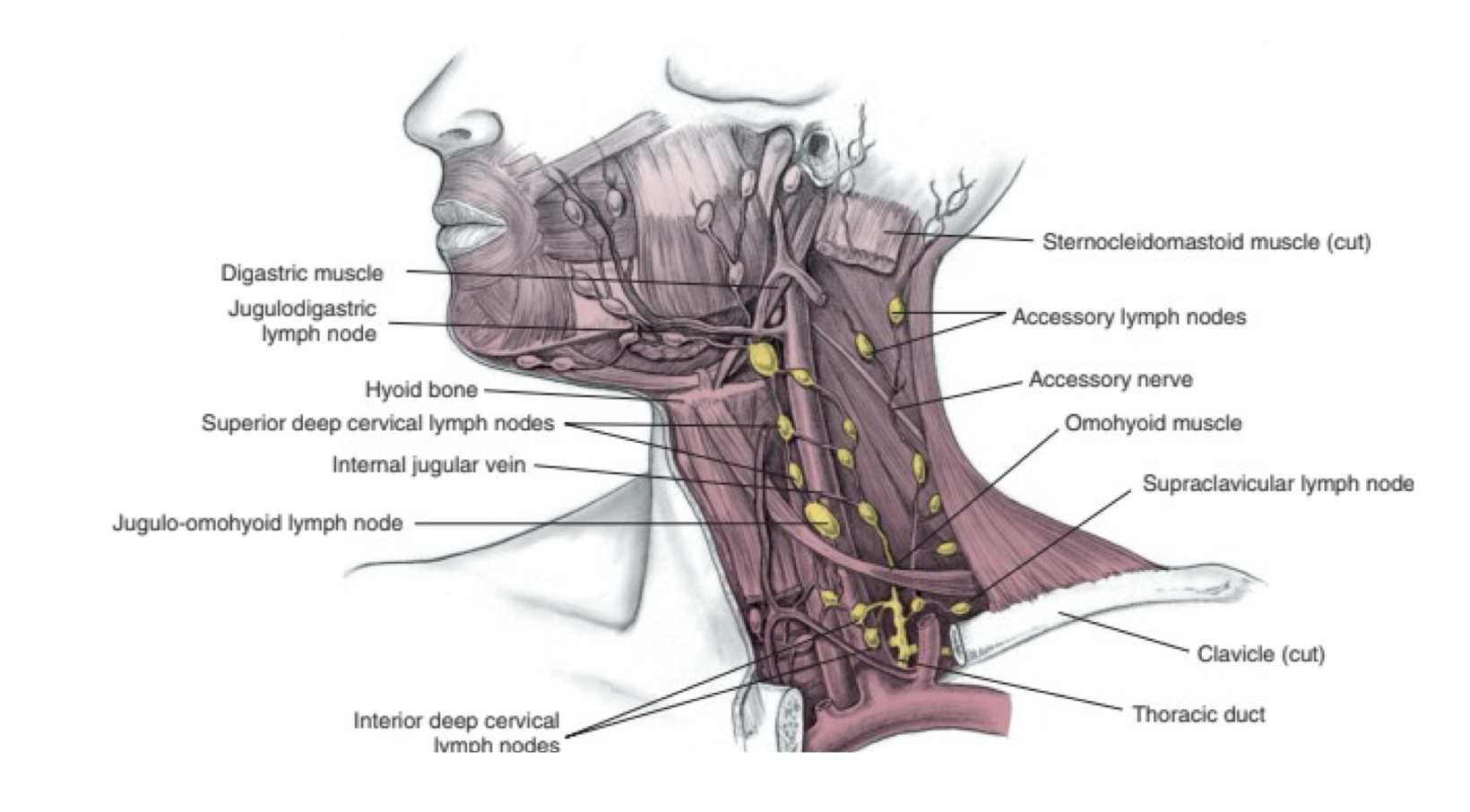face and neck regions
1/60
Earn XP
Description and Tags
chpt 1 garcia
Name | Mastery | Learn | Test | Matching | Spaced |
|---|
No study sessions yet.
61 Terms
structures of the face and neck and any other structure associated with them are oriented according to
ANATOMICAL POSITION
a change in surface feature in a patient may signal
a condition of clinical significance and must be noted in the patient record as well as correctly followed up by the examining dental professional
regions of the face include
frontal
orbital
nasal
infraorbital
zygomatic
buccal
oral
mental
lymph nodes when palpable
should be noted in the patient record
lymph nodes
bean-shaped bodies grouped in clusters along the connecting lymphatic vessels
frontal region of the face includes
forehead and area above the eyes
frontal region examined
visually inspected and bilaterally palpated
orbital region includes
eyeball and all of its supporting structures contained in the bony eye socket
orbital region explained
visually inspecting the eyes and their movements and responses to light and action
nasal region includes
external nose
root of the nose
apex of the nose
nares
nasal septum
ala
external nose
main feature of the nasal region
root of the nose
located between the eyes
apex of the nose
the tip
nares
nostril
nasal septum
midline that separates the nares
ala
winglike cartilaginous structures that laterally bound the nares
nasal region examined
visually inspected and bilaterally palpated starting at the root and proceeding to the apex
infraorbital region
located inferior to the orbital region and lateral to the nasal region
zygomatic region
overlies the bony support for the cheek, the zygomatic arch
temporomandibular joint (TMJ)
zygomatic arch
extends from just below the lateral margin of the eye toward the middle part of the external ear
TMJ
location where the upper skull forms a joint with the lower jaw
TMJ examined
palpate the lower jaw moving, finger is placed gently into the external ear canal during movement
buccal region includes
soft tissue of the cheek
masseter muscle
angle of the mandible
buccal and zygomatic regions include
parotid salivary gland
infraorbital, zygomatic and buccal regions examined
visually inspecting and bilaterally palpating each side of the face while asking the patient to clench their teeth multiple times
infraorbital, zygomatic and buccal regions examined
NORMAL/ HEALTHY FINDINGS
firm and smooth without tenderness or increased size or firmness
joint movement should be smooth, continuous and silent
should be free of pain
infraorbital, zygomatic and buccal regions examined
ATYPICAL FINDINGS
tenderness and pain associated with maxillary sinusitis and noise or deviation of lower jaw on opening
infraorbital, zygomatic and buccal regions examined
ABNORMAL FINDINGS
facial paralysis or stroke, temporomandibular disorder with limitations of movement, subluxation or pain on TMJ movement
oral region includes
lips
oral cavity
vermillion border
vermillion zone
mucocutaneous junctuion
philtrum
tubercle of upper lip
labial commissure
maxilla
mandible
vermillion border
each lip begins as this and includes only those areas that are redder in color with variations as to tone
vermillion zone
darker reddish appearance than the surrounding skin
mucocutaneous juction
part that outlines lips from the surrounding skin
philtrum
on the midline of the upper lip, extending downward from the nasal septum, is a vertical groove
tubercle of the upper lip
philtrum terminates a thicker area of the midline of the upper lip
labial commissure
where upper and lower lips meet at each corner of the mouth
maxilla
the bone underlying the upper lip is the upper jaw
mandible
the bone underlying the lower lip is the lower jaw
lips examined
bidigitally palpate as well as visually inspected in a systemic manner, from one commissure to the other
mental region includes
chin
mandible
mandibular symphysis
ramus
coronoid process
coronoid notch
mandibular condyle
mandibular notch
chin
major feature of mental region
mandibular symphysis
marks the midline of the mandible
ramus
on lateral aspect of the mandible, stout flat plate extends superiorly and posteriorly from the body of the mandible on each side
coronoid process
at the anterior border of the ramus is a thin, sharp margin
coronoid notch
main part of the anterior border of the ramus forms a concave forward curve
mandibular condyle
posterior border of ramus is thickened and extends from the angle of the mandible to a projection
mandibular notch
between the coronoid process and the condyle is a depression
mental region examined
visually inspected and bilaterally palpated
neck regions extend from
skull and lower jaw down to clavicles and sternum

superficial cervical nodes

deep cervical nodes
sternocleidomastoid muscle
large strap muscle, easily palpated on each side of the neck of a patient, with its borders dividing the neck into further regions
hyoid bone
suspended in the neck, many muscles attach to controlling the position of the tongue
thyroid cartilage
found anterior midline and inferior to the hyoid bone
larynx
voice box
thyroid gland
an endocrine gland, also palpated on a patient within the midline cervical area
parathyroid glands
endocrine glands that are located close to or within posterior aspect of each side of the thyroid gland but cannot be palpated
submandibular salivary gland and the sublingual salivary gland
can both be palpated in the neck region
hyoid bone effectively palpated
by feeling inferior to and medial to the angles of the mandible
thyroid gland examined
place one hand on the side of the trachea and gently displacing the thyroid tissue to the other side of the neck, while other hand palpates the displaced gland tissue
submandibular salivary gland and region examined
palpate inward from the inferior border of the mandible near its angle as the patient lowers the chin
then push tissue over the bony inferior border of the mandible on each side, where it is grasped then rolled
submandibular and sublingual salivary glands and region examined
during intraoral examination by palpating floor of the mouth behind each mandibular canine, with one hand placed intraorally and one extrorally